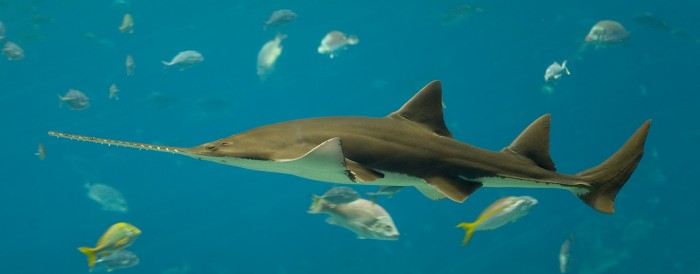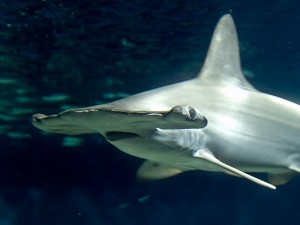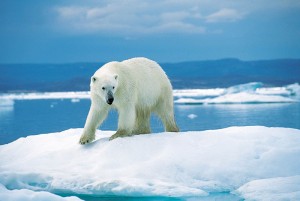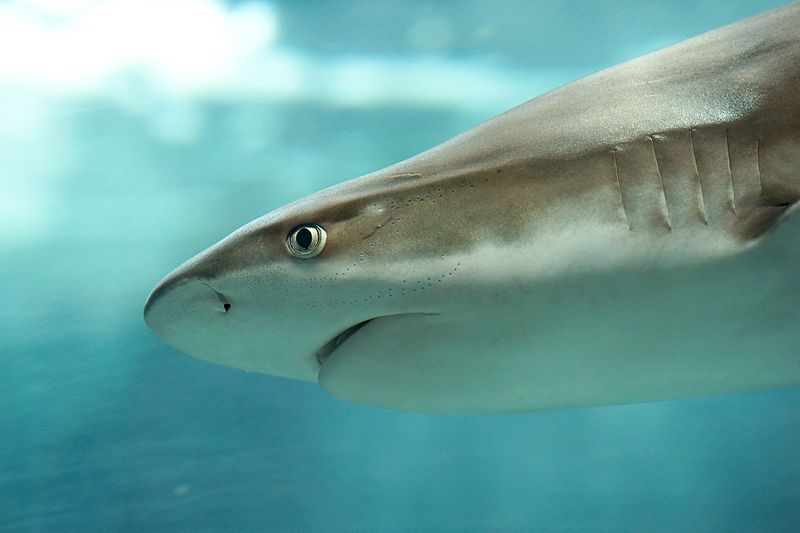New Strategy to Save Sharks and Rays
More than 1,100 species of sharks and rays, in both marine and freshwater habitats, are facing extinction. Threats to their survival include pollution, habitat loss and overfishing.
 Image: By Diliff via Wikimedia Commons
Image: By Diliff via Wikimedia Commons More than 1,100 species of sharks and rays, in both marine and freshwater habitats, are facing extinction. Threats to their survival include pollution, habitat loss and overfishing. The most imminent threat to sharks and rays is overfishing for a number of reasons. Numbers of fisheries to meet human demand are declining, fishing practices are destructive and often on a huge, industrial scale which wipe out large numbers of animals at alarmingly fast rates, and strong demand for shark and ray products, for example, fins, meat, oil, and gill plates. These species are particularly vulnerable to overfishing due to their slow growth rate, their late maturity and the fact that they produce few young in their lifetimes.
Another key problem facing sharks and rays is the lack of political will on all levels – global, national and local – to provide the proper protection that they need so urgently. But a group of international organisations hope to tackle all of these issues by releasing a new 10 year strategy to save them. Released in conjunction with a Convention on the Conservation of Migratory Species of Wild Animals (CMS) meeting on shark conservation, held earlier this month in Costa Rica, the “Global Priorities for Conserving Sharks and Rays: A 2015-2025 Strategy” calls for greater inclusion of sharks and rays in conservation action plans. It states that countries around the world must take action to conserve and rebuild vulnerable populations, but emphasises that rays – including skates, stingrays, sawfishes, guitarfishes and devil rays – should receive as much attention and investment as their better known relations, the sharks, because they are more threatened and less protected.
The report was based on extensive data analysis by experts from Shark Advocates International, Shark Trust, TRAFFIC, the Wildlife Conservation Society and World Wildlife Fund, with input from the International Union for the Conservation of Nature Shark Specialist Group. “We are eager to share our global shark and ray conservation strategy with governments, and to discuss concrete steps toward the many shared goals that are ripe for action,” said Sonja Fordham, President of Shark Advocates International. “Although the challenges are daunting and many questions remain, the tools and resources are already sufficient to meet CMS obligations for protecting many endangered rays and limit the catch of many heavily fished sharks.”
The strategy emphasises that science-based limits on shark and ray fishing and trade are urgently needed to end overfishing and to ensure sustainability. “Some shark and ray populations are capable of supporting fisheries in the long term,” said Ali Hood, the Shark Trust’s Director of Conservation. “Sustainable use is a pragmatic approach to conservation, which values the natural world, the importance of livelihoods, the cultural significance of products, and the need to minimise waste through full utilisation. It also requires a genuine commitment to science-based management of populations – a key objective of this global ten-year strategy.”
Glenn Sant, TRAFFIC’s Fisheries Programme Leader, added: “Shark and ray protection measures are only as good as their actual implementation. Ensuring the traceability of fisheries products along the trade chain is essential to assess the effectiveness of any regulations and ultimately in bringing about real conservation benefits for the species affected.”
Some sharks and rays are listed under the CMS – for these species the authors have called upon member countries to ensure that several key steps are taken in line with convention obligations. These include establishing strict national protections for all five endangered sawfish species and all manta and devil rays, and adopting national and regional fishing limits for heavily-fished, highly migratory sharks such as mako, hammerhead and thresher sharks.
Included in the strategy is the recent findings that market demand for shark and ray meat is significant, and is on the rise. This is in addition to demand for shark fins in Asia, long considered the major driver behind overfishing of sharks. “The volumes of shark and ray meat traded internationally have doubled since the 1990s and are now considered as important as shark fin in driving overfishing of these animals,” noted Andy Cornish, Shark and Ray Initiative Leader of WWF International. “Driving major reductions in the global demand for shark and ray fins and meat, the vast majority of which are currently from unsustainable and untraceable sources, is an integral part of the strategy.”
Another major stumbling block to protecting sharks and rays is the lack of knowledge of their population status. The strategy highlights that nearly half of the world’s sharks and rays are classified by the IUCN as being ‘Data Deficient’. The information scientists have on these species is insufficient to assess the health of their populations, further impeding conservation action. “Our analyses for the IUCN Red List of Threatened Species reveal a quarter of the world’s cartilaginous fishes as at risk of extinction. A major shift in effort is needed to prevent the extinction of 70 most endangered species – sawfishes, guitarfishes, wedgefishes, freshwater sharks and rays – and to clarify the conservation status and needs of the 600 Data Deficient and newly discovered species,” said IUCN SSG co-chairs Nick Dulvy and Colin Simpfendorfer.
Both sharks and rays play vital roles in ecosystems and many highly endangered species are known as ‘keystone’ species because they are so important to the habitat in which they live. Their extinction could cause the whole ecosystem structure to collapse. Better protection for sharks and rays will mean better protection for the oceans, which are increasingly becoming damaged and degraded by man’s harmful activities.





No comments yet.